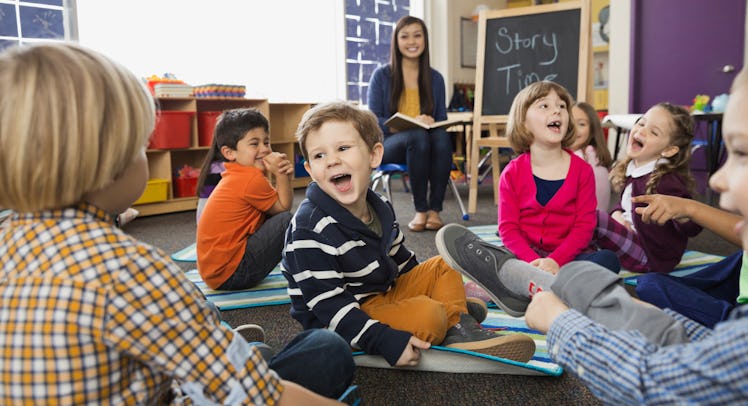Elementary School Teachers Are Too Demanding of Students’ Attention Spans
Elementary school students were frequently "off task" in study of more than 50 classrooms.

Distracted students are the bane of teachers. In surveys, teachers complain about students walking around the classroom, talking with peers, staring at the walls and fidgeting with their clothes — anything but paying attention to the lesson or the task at hand.
Teachers are crying out for help to keep kids on task, but student behavior is difficult for education researchers to study. Just the presence of an outside observer can suddenly put kids on their best behavior. And it’s a challenge to track what every kid in a classroom is doing. Researchers usually resort to picking a handful of students to focus on. But that leads to small studies where the results are less reliable.
Thanks to technology, and a novel system for tracking more than 20 kids in a room at once*, a team of seven researchers managed to track off-task behavior among every student in more than 50 classrooms, from kindergarten through fourth grade. They collected more than 100,000 observations of student behavior from roughly 1,100 students over the course of a school year.
What they found confirms that students are distracted a lot. In one subset of 22 charter school classrooms, 29 percent of student behaviors were off task. In a broader group of 30 private, parochial and charter school classrooms, 26 percent of behaviors were off task. In other words, the average elementary school student is distracted more than a quarter of the time. That was as true for fourth graders as it was for kindergarteners. Off-task behavior didn’t improve with age, or with a child’s socioeconomic status.
This article was originally published on The Hechinger Report. Read the original article by Jill Barshay.
The 2016 paper, “Off-task behavior in elementary school children,” was published in the peer-reviewed journal Learning and Instruction, and was funded by the Institute of Education Sciences, an arm of the Department of Education.
The researchers also kept track of how the teachers were instructing students during these observations. Not surprisingly, students went off task more frequently during whole-group instruction than during small group or individual work.
Length of lesson matters, too. Students went off task more often as an instructional activity increased beyond 10 minutes. Indeed, the researchers found that 25 percent of instructional activities lasted longer than 17 minutes. That’s longer than the typical adult attention span of 15 minutes, according to Karrie Godwin, a professor at Kent State University, and one of the lead authors of the study.
“If adults are not good at maintaining attention, and we’re talking mature cognition, it’s certainly going to be difficult for children,” said Godwin. “This research points to divvying up instructional activities into smaller chunks.”
Godwin especially recommends smaller blocks of time for challenging material, such as fractions.
A common source of distraction was classroom decor. A quarter or more of all off-task behavior involved kids looking at posters or playing with classroom objects. That confirmed Godwin’s laboratory research in 2014, which found that heavily decorated classrooms hinder learning for kindergarteners. In her laboratory, Godwin is now experimenting with projectors that change what is displayed on the walls depending on what subject is being taught.
“We certainly don’t want to promote putting children in a sterile environment,” said Godwin. “Maybe it’s okay if kids are distracted by the learning environment if the distractions are closely aligned with the educational goals. We’re researching that now.”
It’s an open question whether all off-task behavior is bad. Previous research has generally shown that distractions reduce the amount of time that kids are learning and that in turn lowers achievement. However, some psychologists have theorized that children can productively give themselves a sort of “time out” to calm themselves, and then re-engage in the lesson with renewed concentration. Experts call it emotional self-regulation. Others theorize that seemingly irrelevant conversations between peers are helping to build social bonds that allow group projects to flourish. And some theories link off-task behavior to creativity.
But given the sheer quantity of off-task behavior in a typical classroom, Godwin believes it’s worth trying to reduce it. “There’s certainly room to improve classroom management and increase learning opportunities,” she said.
* One of Godwin’s six co-authors, Ryan Baker at the University of Pennsylvania, created a software application for hand-held devices where classroom observers can rapidly document what both teachers and students are doing. Observers are trained to observe children through their peripheral vision so that a child is unaware that he or she is being observed. Observers look at every child, one at a time, in a specified order. As soon as a child is showing a clear behavior, whether on or off task, it is noted and the observer moves on to the next child on his list. More than a dozen observations are taken for each child during each classroom session. This gives equal weight to all the children in the class and avoids overemphasizing attention-grabbing behaviors or highly distractable children.